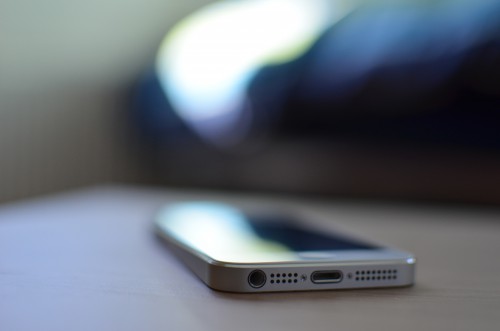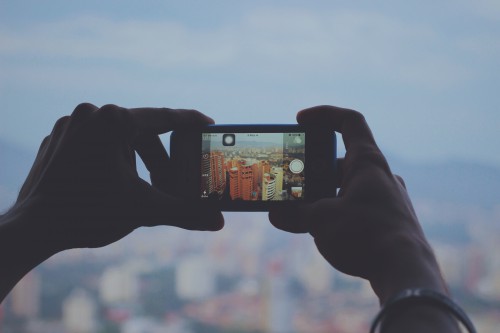
As I scrolled through my Instagram feed last week, I couldn’t help but notice the repeating post of a blank women’s silhouette with the text, “Not-there.org.” Celebrities like Blake Lively and Jessica Alba posted the image to their accounts in honor of celebrating International Women’s Day. Little did I know that these celebrities’ posts were part of a much bigger movement captivating the social sphere in an effort to raise awareness about gender equality.

The spot “We’re Not There Yet,” released by The Bill, Hillary & Chelsea Clinton Foundation, features the voices of Amy Poehler, Sienna Miller and Cameron Diaz discussing how even though it is 2015, women still don’t have the same rights as men in the work place. In an effort to raise awareness, brands such as Under Armour and Allure Magazine supported the movement, displaying ads and magazine covers without female characters represented.

So what does this mean for YAYA women? According to the Institute for Women’s Policy Research, in 2013, female full-time workers made only 78 cents for every dollar earned by men, a gender wage gap of 22 percent. In addition, if change continues at the same pace as it has for the past fifty years, it will take 44 years, until 2058, for women to reach pay parity.
The YAYA generation is hearing this message loud and clear, and powerful advertising such as the “We’re Not There Yet” campaign is an effective way to influence them. YAYA consumers want authenticity; they want to hear the truth. And the truth is that women to this day are still not getting fair and equal treatment. This is a cause that all YAYA women can rally around as they enter and thrive in the work place.
Despite the impact of International Women’s Day and the shocking statistics that were released, the reality television show, The Bachelor, decided to drop the news that the next season of The Bachelorette would feature not one, but two bachelorettes. The response? Outrage that the show would belittle women that way, and even moreso that they would announce the change a day after International Women’s Day. This anger is proof that the “We’re Not There Yet” campaign is changing people’s minds and inspiring the YAYA market to believe in making a change and fighting for gender equality.

Besides relaxing on the beach this past spring break, I was also looking forward to getting away from my phone’s incessant rings, dings and vibrations. This would have been possible, except for one major problem — I couldn’t put my phone down.
It’s no secret that fellow YAYA consumers are just addicted to smartphones. According to a July 2014 Nielsen study, 18- to 24-year-olds spend the most time out of any age group on smartphone apps, clocking in more than 37 hours each month on an average of 28 apps.
At first, this sounded like a ridiculous amount of apps and time. But after I thought about the way I’d used my phone over spring break, the statistic suddenly didn’t seem so crazy. After all, I downloaded the Turbulence Map app to ease my fear of flying. I used a mobile boarding pass for my flights. I booked Uber rides all around town. I Venmo-ed my friends for picking up the bill at dinner. I probably spent more time documenting the ocean view with my phone’s camera than actually stopping to look at the beach. And that was just the first day.
Clearly, smartphones have eliminated the need for so many things, like disposable cameras, maps and a good taxi wave. Their next victim? Our wallets.
Brands can expect the smartphone-obsessed YAYA market to embrace mobile payment apps in the very near future. While it’s true that current millennial usage of mobile payment apps like Google Wallet or Apple Pay is low, experts anticipate a change in 2015.
According to a recent FICO study, 32 percent of millennials said that they are “very likely to use mobile payment providers in the next 12 months,” compared to just 8 percent of respondents aged 50 or over who said the same. What’s more, a study by J. Walter Thompson found that 44 percent of millennials would rather use their mobile phone than cash to pay for small items, and that 70 percent think “the way we pay for pay for things will be totally different in 5 years.” Seventy percent! I can already picture my future explaining to my children what a wallet was.
So if there is one thing brands can bank on, it’s that millennials will become increasingly dependent, both mentally and financially, on their smartphones. My advice to brands looking to appeal to the YAYA market: give us opportunities to pay with our beloved smartphones and reap the benefits. We’ll not only be impressed with your staying ahead of the curve — we’ll thank you for it with our dollars (hopefully, with a simple swipe!).
In 2014, digital music downloads and subscriptions surpassed CD sales for the first time, according to The Wall Street Journal. It’s no secret that marketers know they can find the elusive, tech-savvy millennial generation on these platforms. Spotify, Pandora and other music aggregates are drawing in millennials across the world, but one question that remains: how impactful is this platform for targeting 18- to 24-year-olds?
According to AdWeek, Spotify recently launched playlist targeting that amasses like-minded listeners for advertisers. Similarly, iHeartMedia launched a programmatic marketplace for advertisers to buy radio spots, while consolidating local radio stations to harness a national reach. Pandora is also offering brands the opportunity to programmatically buy based on specific demographics. These new advances only improve efficiency in brands’ reach.
18- to 24-year-olds are the most predominant age group of Spotify users, according to Statista. That fact alone is compelling for advertisers hoping to reach this demographic. For students of this age group, however, Spotify offers premium listening for a discounted price of more half the regular monthly subscription cost. In addition, other Internet radio sources, such as SoundCloud and 8tracks, offer listening with little to no advertising. Knowing this, it’s hard to ignore that a significant portion of YAYA consumers may not even receive messaging at all.
Currently, the majority of Internet radio users take advantage of sponsored listening rather than ad-free premium subscriptions. Of the free Internet radio users who are between the ages of 18 and 24, 54% had a positive response and 32% can remember at least one of the ads, according to Mintel. When comparing terrestrial radio, 58% had a positive response, but only 28% could remember at least on the ads. With terrestrial radio, they were also less likely to discover new products or services they would like to try.
Coupled with Internet radio’s large user base and sophisticated demographic targeting ability, it’s safe to say that it is a useful vehicle for delivering messaging. Although Internet radio is more effective than terrestrial radio, the amount of 18- to 24-year-olds with ad-free radio subscriptions is concerning to brands. As proven by our State of the YAYA report, YAYA consumers want to be spoken with rather than spoken to. To accommodate this desire, branded playlists and banner ads can create a friendly relationship with 18- to 24-year-olds by allowing them to enjoy their favorite playlist without disturbances.



